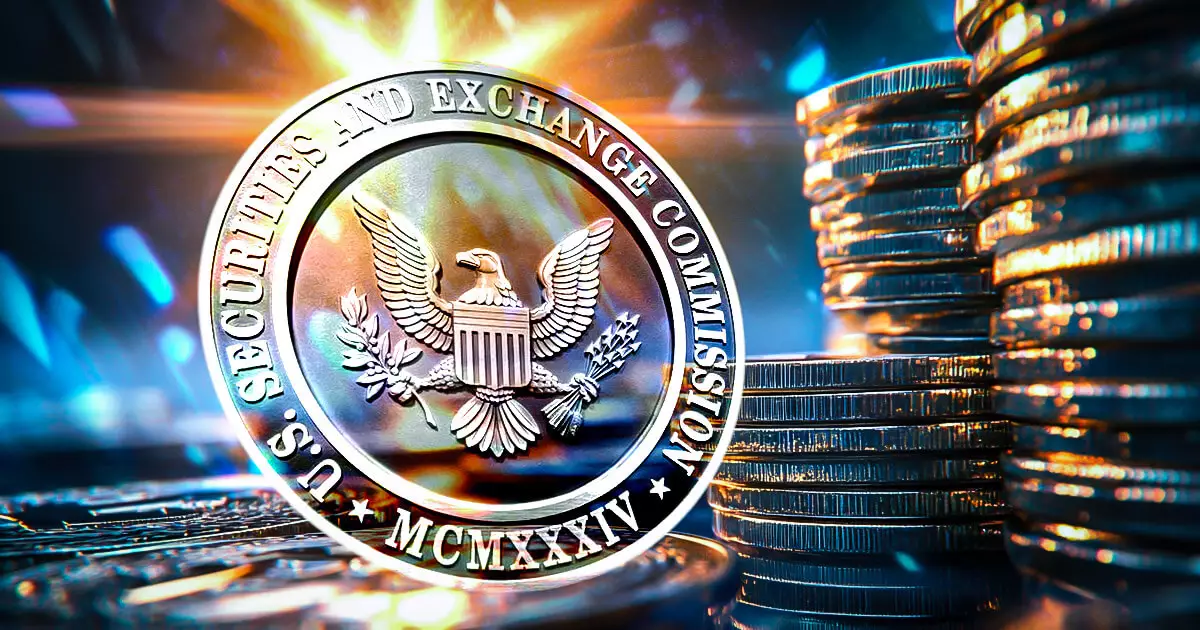On February 5, 2023, a pivotal meeting occurred as the U.S. Securities and Exchange Commission (SEC) Crypto Task Force convened with notable industry figures, including Jito Labs’ CEO Lucas Bruder and Multicoin Capital’s managing partner Kyle Samani. The focus of this gathering was the potential inclusion of staking in crypto exchange-traded products (ETPs). The discussions brought light to a crucial aspect of proof-of-stake (PoS) blockchain ecosystems, particularly with prominent networks like Ethereum and Solana where staking plays an essential role in network operation and security.
Staking, in the context of PoS networks, entails the locking of native cryptocurrencies—such as Ethereum (ETH) or Solana (SOL)—to assume a vital role in the network’s consensus mechanism. In return, validators earn transaction fees and newly minted tokens, creating an incentive for participation. The industry’s representatives argued that excluding staking features from ETPs limits investor potential and diminishes network security, stifling the full benefits that PoS assets can offer.
Regulatory Concerns and Industry Counterproposals
Despite the positive attributes of staking, the SEC’s previous apprehensions have shaped a cautious regulatory landscape. Among its concerns are issues related to the settlement timelines of such ETPs, the tax implications surrounding staking rewards, and the classification of staking as a potential securities offering. Historically, the SEC has mandated issuers to remove staking features from initial Ethereum ETP applications, falling in line with what it deemed necessary precautionary measures.
During the recent meeting, industry representatives proposed two innovative models aimed at integrating staking into ETPs while simultaneously addressing the SEC’s concerns. The first, termed the “Services Model,” would enable a portion of the ETP’s assets to be staked via third-party service providers running validator nodes. This strategy not only protects the staked assets but also facilitates timely redemptions for investors—a crucial aspect that could help alleviate SEC worries over liquidity.
The second proposition, known as the “Liquid Staking Token Model,” introduces a different approach by allowing ETPs to hold liquid staking tokens (LSTs) that represent the underlying staked assets. This method, exemplified by the hypothetical inclusion of JitoSOL in a Solana-based ETP, sidesteps direct engagement in staking, thereby mitigating redemption timing concerns and providing a more streamlined approach to staking within the ETP framework.
These models lay the groundwork for a constructive dialogue with regulators, highlighting that industry players are aware of their concerns and proactively seeking solutions that bolster compliance without sacrificing innovation. The optimism surrounding these discussions reflects a broader shift within the SEC, especially under the leadership of new pro-crypto figures such as acting chairman Mark Uyeda and Commissioner Hester Peirce, who leads the Crypto Task Force.
Earlier assertions from Peirce hinted at significant regulatory changes regarding cryptocurrencies, with speculations that alterations—including acceptance of staking in crypto ETPs—could begin to materialize as early as 2025. The potential for institutional adoption of crypto-backed financial products is also growing, alongside discussions around incorporating options into spot Bitcoin ETFs, highlighting increasing momentum behind digital assets.
As the SEC reassesses its stance on staking in ETPs, the implications for investors could be substantial. Integration of staking features into these products may offer a means for investors to tap into the rewards mechanisms associated with PoS networks, enhancing potential returns while bolstering network security. However, the SEC’s evolving approach signals a broader trend aimed at creating a more conducive regulatory environment for cryptocurrencies.
Analysts like James Seyffart from Bloomberg have posited that these discussions should have initiated years ago, yet the current engagement is viewed as a positive starting point. This ongoing dialogue emphasizes the struggle for a balanced approach—one that fosters innovation within the crypto space while maintaining the necessary regulatory safeguards.
The talks surrounding the integration of staking in crypto ETPs reflect a critical inflection point for both the industry and regulators. If successful, these measures could herald a new era for crypto assets, encouraging broader adoption and investor participation in an increasingly digital economy.

